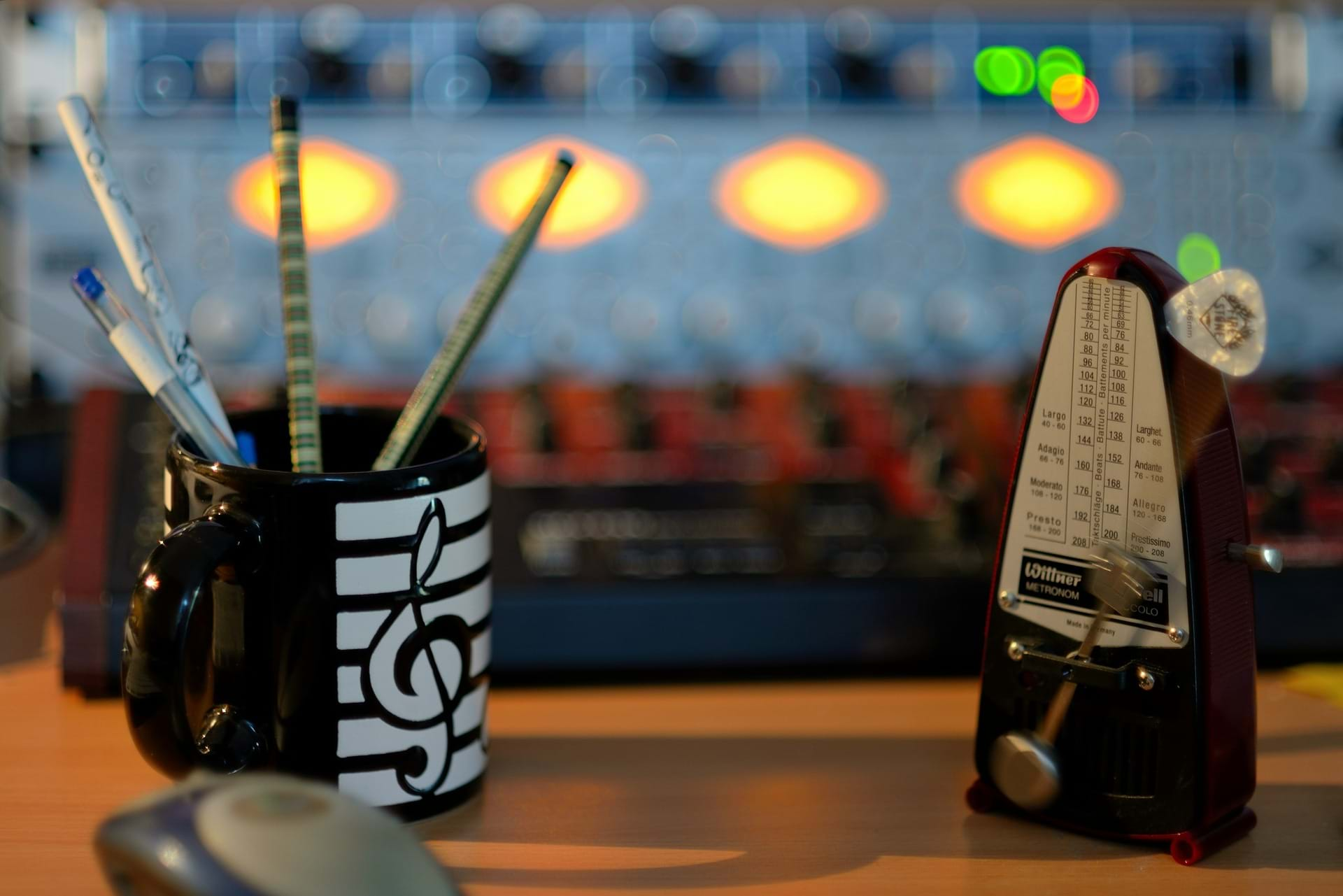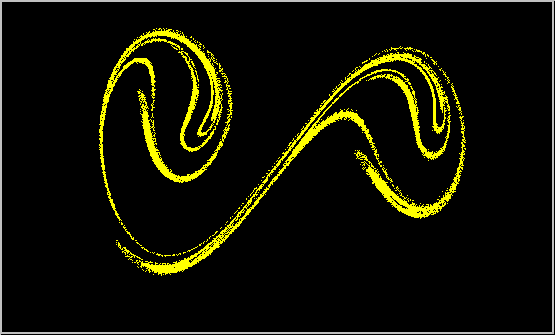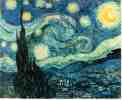Quick Look
Grade Level: 8 (7-9)
Time Required: 1 hours 45 minutes
(two 50-minute sessions)
Expendable Cost/Group: US $0.00
Group Size: 1
Activity Dependency: None
Subject Areas: Algebra, Physical Science, Physics
Summary
Students write poems using rhyme and meter as they come to understand the mechanical concept of rhythm, based on the principle of oscillation, in a broader biological and cultural context, as seen in dance and sports, poetry and other literary forms, and communication in general. Note: The literacy activities for the Mechanics unit are based on physical themes that have broad application to our experience in the world — concepts of rhythm, balance, spin, gravity, levity, inertia, momentum, friction, stress and tension.
Engineering Connection
Engineers are concerned with oscillations or resonances in the design of mechanical devices. They design automobiles to minimize vibrations from the motor and driving conditions, which can be dangerous and noisy for passengers. Aerospace engineers design to avoid wing flutter, which is a growing oscillation of an aircraft's wing surface resulting in stresses that can lead to structural failure. Engineers also design systems to control the oscillation of moving parts in factory machinery and power system oscillations that could lead to unstable power systems.
Learning Objectives
After this activity, students should be able to:
- Explain why engineers are concerned with oscillations or resonances in the design of mechanical devices
- Write poems using rhyme and meter to understand the mechanical concept of rhythm, based on the principle of oscillation, in a broader biological and cultural context
- Use reading, writing, speaking, listening and viewing skills to solve problems and answer questions
Educational Standards
Each TeachEngineering lesson or activity is correlated to one or more K-12 science,
technology, engineering or math (STEM) educational standards.
All 100,000+ K-12 STEM standards covered in TeachEngineering are collected, maintained and packaged by the Achievement Standards Network (ASN),
a project of D2L (www.achievementstandards.org).
In the ASN, standards are hierarchically structured: first by source; e.g., by state; within source by type; e.g., science or mathematics;
within type by subtype, then by grade, etc.
Each TeachEngineering lesson or activity is correlated to one or more K-12 science, technology, engineering or math (STEM) educational standards.
All 100,000+ K-12 STEM standards covered in TeachEngineering are collected, maintained and packaged by the Achievement Standards Network (ASN), a project of D2L (www.achievementstandards.org).
In the ASN, standards are hierarchically structured: first by source; e.g., by state; within source by type; e.g., science or mathematics; within type by subtype, then by grade, etc.
International Technology and Engineering Educators Association - Technology
-
Explain how various relationships can exist between technology and engineering and other content areas.
(Grades
3 -
5)
More Details
Do you agree with this alignment?
State Standards
Colorado - Science
-
Compare and contrast different types of waves
(Grade
8)
More Details
Do you agree with this alignment?
Materials List
- paper, pens or pencils
- access to the Internet
Introduction/Motivation

The definition of rhythm, according to The American Heritage® Dictionary of the English Language, Fourth Edition:
- Movement or variation characterized by the regular recurrence or alternation of different quantities or conditions: the rhythm of the tides.
- The patterned, recurring alternations of contrasting elements of sound or speech.
- Music.
- The pattern of musical movement through time.
- A specific kind of such a pattern, formed by a series of notes differing in duration and stress: a waltz rhythm.
- A group of instruments supplying the rhythm in a band.
- The pattern or flow of sound created by the arrangement of stressed and unstressed syllables in accentual verse or of long and short syllables in quantitative verse.
- The similar but less formal sequence of sounds in prose.
- A specific kind of metrical pattern or flow: iambic rhythm.
- The sense of temporal development created in a work of literature or a film by the arrangement of formal elements such as the length of scenes, the nature and amount of dialogue, or the repetition of motifs.
- A regular or harmonious pattern created by lines, forms, and colors in painting, sculpture, and other visual arts.
- The pattern of development produced in a literary or dramatic work by repetition of elements such as words, phrases, incidents, themes, images, and symbols.
- Procedure or routine characterized by regularly recurring elements, activities, or factors: the rhythm of civilization; the rhythm of the lengthy negotiations.
Source: Dictionary.com, http://dictionary.reference.com/search?q=rhythm.
Obviously, rhythm is a rich concept with application in many areas. Notice how often the word "pattern" appears in the definitions. Other important terms are "regular," "repetition," "recurring" and "alternation." Rhythm is essentially a repeating pattern.
This repetition of pattern powerfully assists memory and learning. Think of the simple but compelling patterns of rhyme and rhythm of the Dr. Seuss books, including the classic Green Eggs and Ham, the best-selling Seuss book of all time. Notice how the lines have the back-and forth rhythm of a pendulum.
Do you like green eggs and ham?
I do not like them, Sam-I-am.
I do not like green eggs and ham.
You can feel your body sway back and forth as you are carried along by the rhythm. Not all poetry is this regular, of course, and there are many rhyming patterns. The rhythm of poetry is measured by its meter and counted by means of a unit called a foot, which is composed of a pattern of stressed ( / ) and unstressed ( ^ ) syllables. There are several types of metrical feet, which have names derived from Greek: iambic ( ^ / ), trochaic ( / ^ ) , anapestic ( ^ ^ / ) and dactylic ( / ^ ^ ). For this activity, it is not essential for you to know all the different metrical types (there are several more). For now, just notice the pendulum-like effect of the trochaic line:
/^/^/^/
Do you like green eggs and ham?
...and the iambic lines:
^/^/^/^/
I do not like them, Sam-I-am.
^/^/^/^/
I do not like green eggs and ham.
Iambic meter is the most common in English verse. It is said to be most like the natural rhythm of English speech. For additional introductory information on the meter of poetry check out the following sources:
Procedure
The theme for this activity — rhythm — takes its cue from the mechanical oscillation of a pendulum, as explained in Mechanics unit, Lesson 9.
In the immortal words of Duke Ellington, "It don't mean a thing if it ain't got that swing." "It" includes everything from the beating of our hearts, to the ebb and flow of tides, to the rotation of pulsars. This literacy activity is a celebration of rhythm in its many cultural forms — music, poetry, art and dance. The activities included are only a starting point for students to begin a lifelong exploration of the wonders of rhythm.
Observing
Using the definition of rhythm (see the Introduction/Motivation section) as a start, think of as many things as you can that are rhythmical. Over a 24-hour period, make a list in your journal of rhythmical things you observe around your classroom and school, at home or on a walk through your neighborhood. See who can come to class the next day with the longest, most unique list. See who thinks of the most remarkable, unusual or often unnoticed rhythmical phenomena.
Thinking
Generally, we think of rhythm in terms of sounds we hear with our ears, such as music or the drip of a leaky faucet. But, sounds are felt with the whole body as movement or vibration. Rhythm can also be experienced visually as in the harmonious lines of a painting or sculpture, or a beautifully engineered object such as a suspension bridge or sailing ship. In this respect, rhythm is often associated with concepts of balance and proportion in design. Use all your senses to add to your list of rhythmical things.

Perhaps, in composing your list, you thought of the rhythm of day and night, or waking and sleeping. Did you include the rhythm of the tides on your list? Did you know that rivers also move in rhythmic patterns? Over time, rivers form oscillating curves called meanders.
This rhythmic power provides an obstacle to engineers who seek to channel or dam rivers for flood control. The rhythm of the river works constantly to create new channels. Notice how the meanders of the river resemble the graphical curve of the pendulum swing shown in the introductory graphic. How many other natural rhythms can you think of?
Writing
Are you a poet and don't know it? Do you ever notice that sometimes your speech patterns develop a rhythm? Not all poetry has to rhyme, but all poetry benefits if it conveys a sense of rhythm in some fashion, either through patterns of words or rhythmic movements within the lines of the poem.
Notice how the repetitions of words (such as "mark'd," "filament," "surrounded" and "till") and word-forms ending in -ing (such as "unreeling," and "musing, venturing, throwing") and initial sounds ("vacant, vast" and "seeking the spheres") contribute to the rhythmic effect of this poem by Walt Whitman:
A NOISELESS, patient spider,
I mark'd, where, on a little promontory, it stood, isolated;
Mark'd how, to explore the vacant, vast surrounding,
It launch'd forth filament, filament, filament, out of itself;
Ever unreeling them — ever tirelessly speeding them.
And you, O my Soul, where you stand,
Surrounded, surrounded, in measureless oceans of space,
Ceaselessly musing, venturing, throwing, — seeking the spheres, to connect them;
Till the bridge you will need, be form'd — till the ductile anchor hold;
Till the gossamer thread you fling, catch somewhere, O my Soul.
Now, try writing a poem yourself. You might want to experiment with the fun rhymes and meters of Dr. Seuss or the stirring free verse rhythms of Walt Whitman. You could first try closely imitating the poet's meter, using your own subject. What metrical foot is used throughout the following Emily Dickinson verse and the imitator? (Answer: Iambic [ ^ / ])
Emily Dickinson original:
Because I could not stop for Death —
He kindly stopped for me —
The Carriage held but just ourselves —
And Immortality.
Sample imitation:
Because the car ran out of gas
I had to walk a mile
I met a troll along the way
We walked and talked a while.
Source: A Brief Guide to Poetic Imitation, Honors Program, University of Nevada at Reno, 2004, formerly located at www.honors.unr.edu/~fenimore/en297/imitate.html.
Vocabulary/Definitions
alternation: Successive change from one thing or state to another and back again.
free verse: Verse composed of variable, usually unrhymed lines having no fixed metrical pattern.
meander: To follow a winding and turning course: Streams tend to meander through level land.
meter: A particular arrangement of words in poetry, such as iambic pentameter, determined by the kind and number of metrical units in a line.
oscillate: To swing back and forth with a steady, uninterrupted rhythm; to waver, as between conflicting opinions or courses of action; Physics. To vary between alternate extremes, usually within a definable period of time.
phenomenon: An occurrence, circumstance or fact that is perceptible by the senses.
recur: To happen, come up or show up again or repeatedly.
regular: Occurring at fixed intervals; periodic: regular beats of the drum.
stress: The emphasis placed on the sound or syllable spoken most forcefully in a word or phrase.
synchronize: To cause to occur or operate with exact coincidence in time or rate: We synchronized our watches.
Assessment
Pre-Activity Assessment
Journaling: Journal entries of rhythmical things indicate how observant students are and how well they understand the concept of rhythm prior to the class discussion, and poetry analysis and writing exercise.
Activity Embedded Assessment
Kinesthetic Movement: While the rhythm of the river is being discussed, students may act out the principle of oscillation physically in the form of a dance or pantomime.
Post-Activity Assessment
Writing Exercise: By writing an imitation of a famous poem or an original poem that uses meter and rhyme, or other rhythmic principle, students demonstrate how well they understand the principle of rhythm and apply it in their own work.
Activity Extensions
Activities on the topic of rhythm are potentially endless; below are just a few suggestions. Students can make observations in their journals about the activity, or write a brief report, essay or poem about their understanding.
- All that Jazz — Play Duke Ellington or other jazz greats in class. For starters, try Ellington's "Take the 'A' Train" or the long version of Benny Goodman's "Sing, Sing, Sing" from his Carnegie Hall concert. Learn more about the different types of jazz and their distinctive rhythmic signatures. For more ideas and information, see All About Jazz, http://www.allaboutjazz.com/.
- Stomp! — Create your own Stomp group. Stomp is an exciting modern dance troupe using everyday objects in non-traditional ways. To learn more, visit Stomp, http://www.stomponline.com.
- Got Game? — Think of all the ways that a good sense of rhythm improves performance in sport and helps athletes get "into the zone" — from the rhythmic dribbling of a basketball to the even strokes of a swimmer to the steady pumping of a marathoner's legs.
- Tête-à-tête — In conversation, as in all areas of life, it is good to have a sense of give and take. Pay attention to the rhythm of your speech, especially when you are talking with someone else. Good communication has a kind of pendulum swing — tête-à-tête, as the French say, from head-to-head — with neither partner dominating the conversation. Practice taking turns listening and speaking, and develop the rhythm of give and take.
- The Rhythm of the Night — Visual art can also convey a sense of rhythm. Does the swirl in Van Gogh's "Starry Night" painting remind you of anything? (Answer: The swirl defined by the pendulum arc in the introductory graphical animation.) Visit a local art museum to explore how works of visual art incorporate rhythmic elements or convey a sense of rhythm or balance.

Activity Scaling
- Some students may need to practice imitating the rhythmic pattern of a famous poem several times before attempting an original composition.
- The Activity Extensions address a wide range of interests, abilities and learning styles and can be used selectively, as appropriate.
Subscribe
Get the inside scoop on all things TeachEngineering such as new site features, curriculum updates, video releases, and more by signing up for our newsletter!More Curriculum Like This

Students explore how pendulums work and why they are useful in everyday applications. In a hands-on activity, they experiment with string length, pendulum weight and angle of release.
References
Jazz. The Web's Ultimate Guide to Jazz. Accessed May 15, 2004. All About Jazz. http://www.allaboutjazz.com/
The American Heritage® Dictionary of the English Language. Fourth Edition. Houghton Mifflin Company, 2000. Source of "rhythm" definition. Available online at: http://www.dictionary.com
DeSerio, Robert. "Chaotic Pendulum: The Complete Attractor." American Journal of Physics. Vol. 71, pp. 250-257, 2003. (Source of animated gif of chaos movement. Used with permission. See http://www.phys.ufl.edu/courses/phy4803L. Accessed August 12, 2004.)
Dictionary.com. Lexico Publishing Group, LLC. Accessed May 15, 2004. (Source of vocabulary definitions, with some adaptation) http://www.dictionary.com
Klawitter, George. Scansion. Updated July 23, 2000. Poetics, St. Edward's University, Austin, TX. Accessed May 15, 2004. (A basic introduction to scansion) http://myweb.stedwards.edu/georgek/poetics/scansion.html
Percussion for Kids. Stomp. Accessed May 15, 2004. http://www.stomponline.com
Rhythm, Meter and Scansion Made Easy. Mr. Black's 5th and 6th Grade English Page, Riverdale, Oregon. Accessed May 15, 2004. http://server.riverdale.k12.or.us/~bblack/meter.html
Stomp, The International Percussion Sensation. Accessed May 15, 2004. http://www.stomponline.com
Toon, John. Out of Time. Updated September 10, 2000. Georgia Tech Research Horizons. Accessed May 15, 2004. (Researchers recreate 1665 clock experiment to gain insights into modern synchronized oscillators.) http://gtresearchnews.gatech.edu/reshor/rh-f00/time.html
Copyright
© 2004 by Regents of the University of Colorado.Contributors
Jane Evenson; Malinda Schaefer Zarske; Denise W. CarlsonSupporting Program
Integrated Teaching and Learning Program, College of Engineering, University of Colorado BoulderAcknowledgements
The contents of this digital library curriculum were developed under a grant from the Fund for the Improvement of Postsecondary Education (FIPSE), U.S. Department of Education, and National Science Foundation GK-12 grant no 0338326. However, these contents do not necessarily represent the policies of the Department of Education or National Science Foundation, and you should not assume endorsement by the federal government.
Last modified: July 30, 2021




User Comments & Tips